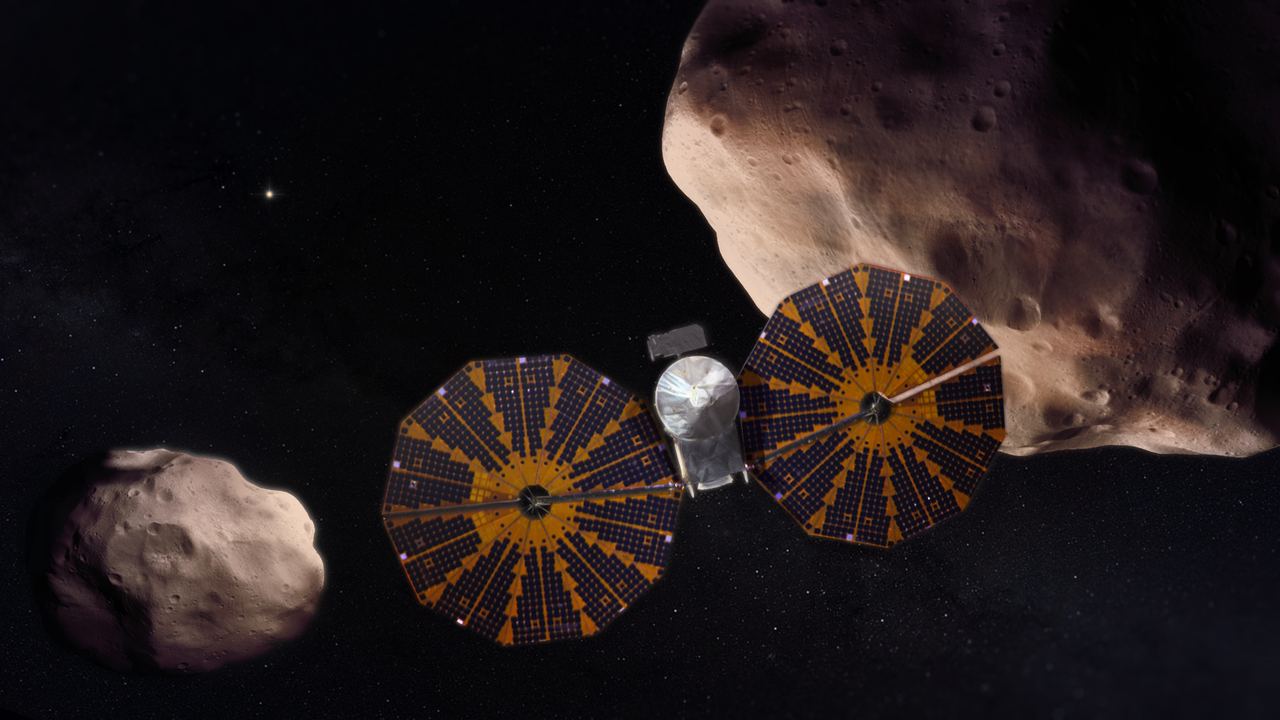NASA’s Lucy spacecraft, currently on its way to the outer Solar System to study Jupiter’s Trojan asteroids, has a solar panel problem. Shortly after its launch last October, engineers determined that one of Lucy’s two solar panels failed to open completely. While the spacecraft has enough power to function, the team is concerned about how the unlatched panel might hinder Lucy’s performance going forward. In an attempt to fix the problem, the team will carry out a new procedure next month that is designed to unfurl the solar panel the rest of the way, and latch it firmly in place.
Lucy’s round solar panels are designed to unfurl like a fan, pulled open by a motor that reels in a line attached to the panels’ ends. After launch, one panel unfolded perfectly, but the other only reached about 345 degrees of the full 360-degree circle, leaving about 20-40 inches of the 290-inch line unspooled. The risks of leaving the panel in its current state aren’t necessarily related to power generation, but rather concern the structural integrity of the spacecraft under the stresses of spaceflight. According to Karen Fox on NASA’s Lucy mission blog, “the team is concerned about potential damage to the array if the spacecraft conducts a main engine burn in its present configuration.”
The proposed solution, set to be attempted during the week of May 9, involves turning on the reel’s primary motor again, but this time also running the backup motor at the same time, increasing the torque in the hopes that the solar panel can be coaxed open by brute force. In other words, the solution is to pull the line harder, and see if it unfurls.
While this sounds like a crude solution, it is not being done lightly, or without forethought. Engineers have been carrying out ground tests here on Earth over the past few months, replicating Lucy’s problems, measuring the risks of the maneuver, and estimating the likelihood of success. Based on these tests, the team has devised a two-part procedure.

The first part, taking place in early May, will involve putting tension on the line for a short duration, to ensure that the spacecraft reacts like the ground tests predict it should. The data gathered from this initial step will help “fine-tune” the rest of the procedure, set to occur a month later.
During step two, the twin motors will be turned on again for a more sustained period, in the hopes it will be enough to lock the panel fully open.
Lucy’s instruments are all operating normally, and it should be able to carry out its mission with or without the panel being fully latched. But it would certainly allow the team to rest easier knowing it is locked in and won’t cause problems down the road. After all, Lucy is slated for an 11-year mission visiting 8 different asteroids between now and 2033. That’s quite the journey to make with a faulty solar panel.
Updates on Lucy’s progress will be available here.
Featured Image: Artist’s impression of Lucy with two of its target asteroids, the binary pair Patroclus and Menoetius. Credit: NASA’s Goddard Space Flight Center/Conceptual Image Lab/Adriana Gutierrez

